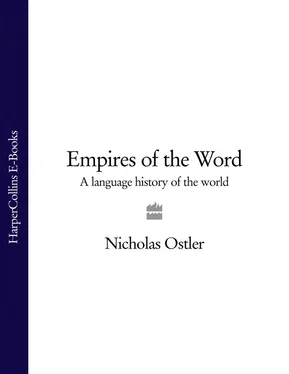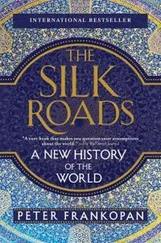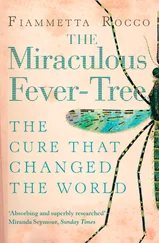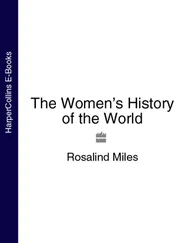This brief analysis has already shown that the encounter between Spanish and Nahuatl in sixteenth-century Mexico pitted two developed cultures one against another. The switch to speaking Spanish that came about in the next few generations involved a change of heart as well as tongue. So much so that the social significance in Mexico of speaking Nahuatl (also called Mexicano ) rather than Spanish has lasted up to the present day. Speakers make comments like these:
There is no way that Nahuatl could disappear because it is the inheritance from our forefathers.
Those of us who speak Mexicano, well, it’s something that belongs to our grandparents. Let Mexicano never be lost. My grandfather and my grandmother always spoke in Nahuatl. They never used the Spanish language.
It is important and at the same time nice to be able to speak Nahuatl because this is the authentic way of talking in Mexico. I consider it very important because we feel we are the authentic Mexicans, because Spanish was only brought here with the Conquest. From that time on people started to speak Spanish in our country. But before the Conquest our grandparents spoke Nahuatl. Obviously the Conquest brought a lot of changes. There was more civilization, and that’s why I think it is important for us also to speak Spanish. But we haven’t been able to stop speaking Nahuatl because our parents speak it and we follow them. 5
Every language defines a community, the people who speak it and can understand one another. A language acts not just as a means of communication among them but a banner of their distinct identity, often to the despair of national governments trying to forge a single identity for all their different language communities. This can have quite perverse effects. It is no coincidence that Nahuatl, with many other ancestral languages of Mexico, largely disappeared from written use towards the end of the eighteenth century, just when political movements led by urban Spanish speakers were raising consciousness of Mexico as a separate country with a view to independence. The contrast between Spanish-speaking mestizos and ‘Indians’ speaking the ancient languages of Mexico was seen as a distraction from the emergence of the identity of the true Mexican. The older languages, seen as ‘backward’, had to go.
This book attempts to convey something of the characteristic viewpoint on the world of each language whose story it tells. Evidently, living in a particular language does not define a total philosophy of life: but some metaphors will come to mind more readily than others; and some states of mind, or attitudes to others, are easier to assume in one language than another. It cannot be a matter of indifference which language we speak, or which languages our ancestors spoke. Languages frame, analyse and colour our views of the world. ‘I have three hearts,’ claimed Ennius, an early master poet in Latin, on the strength of his fluency in Latin, Greek and Oscan. 6
2 What It Takes to Be a World Language; or, You Never Can Tell
The historic forces of merger and acquisition which, over the last five hundred years, built up many of the European languages in the world’s Top Twenty seemed to have spent themselves—or at least to be dammed up—by the end of the twentieth century.
Overt imperialism is no longer defended. The end is no longer openly willed, though the two surgical wars that led off the twenty-first century, to conquer Afghanistan and Iraq, show that the means are still accepted. Likewise, the flow of large-scale migration is for the time being halted. In the past two centuries, flows from European countries had created much of what are now the English-speaking and the Portuguese-speaking worlds, mostly in the Americas, but also in Africa, Australia and New Zealand. Then, in the second half of the twentieth century, there was a significant, but much smaller, flow from once colonised countries, which has created new language communities insulated in the heart of European lands.
The trends that will form the future are still obscure. At present, there is still a multitude of migration volunteers, found in a much wider range of countries, not just ex-colonies; the main brake on their movement and resettlement is the unwillingness of their desired host countries to take them in. While some pundits write of an impending ‘clash of civilisations’, pitting most immediately the Arabic- and English-speaking worlds against each other, the political fabric guaranteed by powerful nations seems firm.
But the world’s language future is not a matter of current affairs, or even news analysis. Language spread is a long-term thing, measured at the very least in generations and more often in centuries and millennia. The fundamental question of this book is to ask how—in what circumstances and with what dynamics—language communities have come to flourish in the past, as well as how some of them have declined and even met their ends.
The most straightforward way in which a language can come to flourish could be called the Farmer’s Approach. All the community needs to do is stay united, and grow its population. This is Organic Growth, which is the typical story of large languages in eastern and southern Asia, and not unknown even in Europe, especially towards the east.* It is not a strategy of active initiative, but it does raise a consequent question: how have languages that follow such a policy been able to defend themselves from foreign communities, which might be tempted to invade and disrupt their steady growth?
The disruption would come, by its nature, from language communities following a less placid path: they may be called the Merger and Acquisition languages (M&A), by analogy with the offensive players in the modern business world. If Organic Growth is the strategy of farmers, this alternative could rather be called the Hunter’s Way.
Such change, resulting from direct contact between communities, is sometimes characterised as one of three types: Migration, where a language community moves bodily, bringing a new language with it; Diffusion, where speakers do not actually move in large numbers but where speakers of one community come to assimilate their language to that of another with whom they are in contact; and Infiltration, which is a mixture of the former two. 1The progress of English into North America and Australia is a case of Migration; into India and Scandinavia, of Diffusion; and into South Africa, of Infiltration.† It is only, for example, through Diffusion or Infiltration that a language can become a lingua franca, a language of wider communication: for this, a language must have been taken up by people who did not speak it natively.
These M&A language communities are the ones whose role develops fast, often through deliberate actions. In practice, these will be the main languages whose careers we trace, because of course they are the most eventful.
Is there any common feature that makes a language community entice others to use its language, and so join it? A way of viewing this book’s theme is as an inquiry into the roots of Language Prestige, defined as the propensity to attract new users. Under what conditions do languages have the power to grow in this way? And are there any properties of the relation between the new and the old language which make speakers willing and able to make the leap?
There is a pernicious belief, widespread even among linguists, that there is a straightforward, heartless, answer to this question. J. R. Firth, a leading British linguist of the mid-twentieth century, makes a good simple statement of it:
World powers make world languages…The Roman Empire made Latin, the British Empire English. Churches too, of course, are great powers…Men who have strong feelings directed towards the world and its affairs have done most. What the humble prophets of linguistic unity would have done without Hebrew, Arabic, Latin, Sanskrit and English, it is difficult to imagine. Statesmen, soldiers, sailors, and missionaries, men of action, men of strong feelings have made world languages. They are built on blood, money, sinews, and suffering in the pursuit of power. 2
Читать дальше











